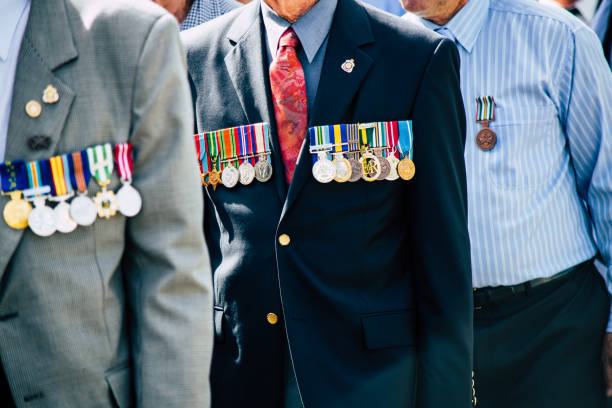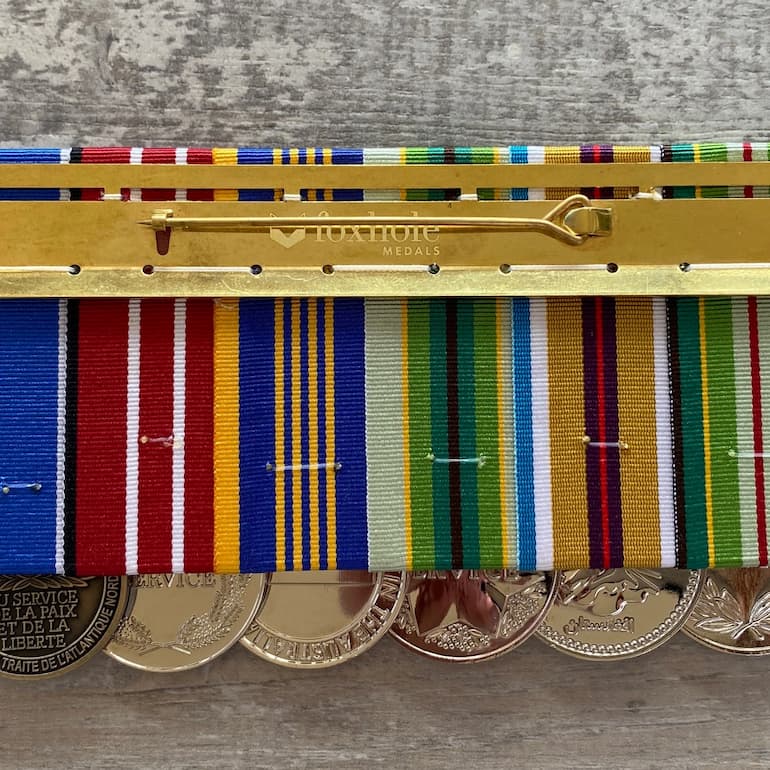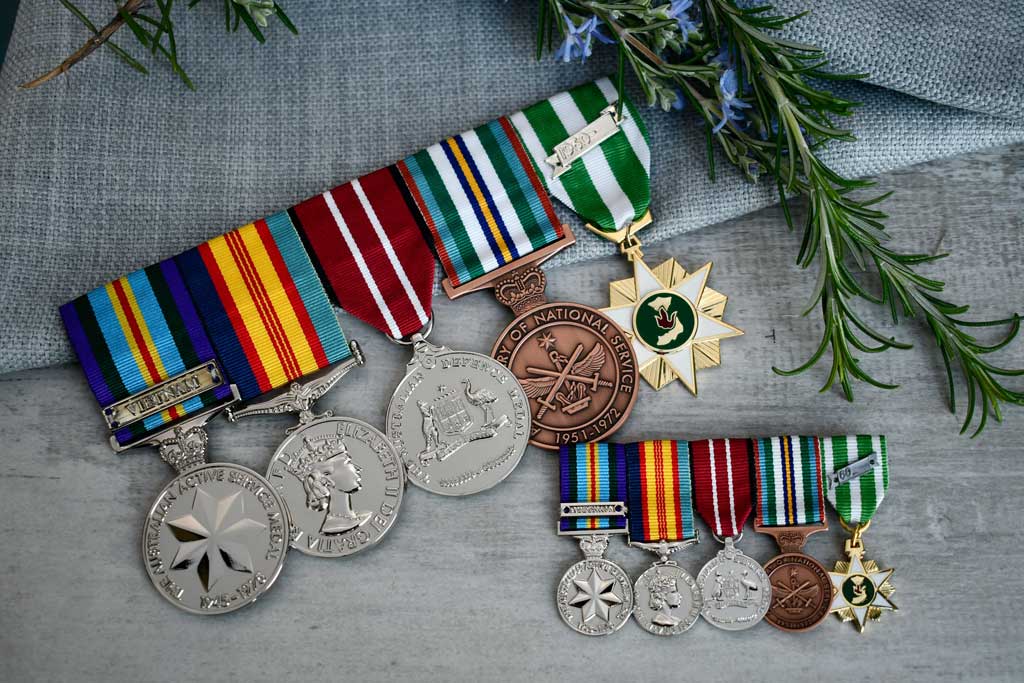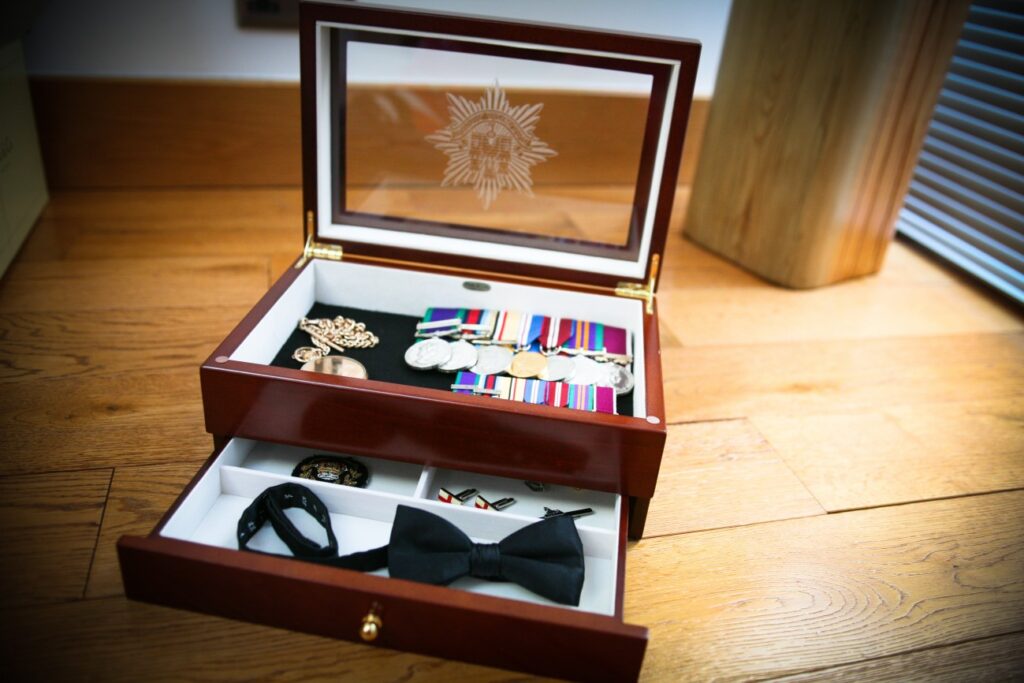In the world of military service, bravery, dedication, and sacrifice are virtues that are not only admired but also honoured. And one tangible way to honour those who bravely fought is by awarding them medals. Whether awarded for acts of bravery, long service, or special achievements, medals carry significant meaning for those who receive them and society at large.
From medals, we can learn about the service of the recipient, where they served, and any bravery awards they have received. The way medals are presented and worn gives them another layer of respect and recognition. This is where the art of medal mounting comes into play. But before we talk about it, let’s go talk about medals and their tradition.
Wearing of Medals

The tradition of wearing medals dates back centuries and it’s deeply rooted in military cultures worldwide. They are awarded to individuals as recognition of their achievements, contributions, and service in various fields. Medals bear intricate designs and represent the accomplishments they signify, and in the military the individuals that wear the medals, we can see their ranks, years of service and acts of bravery and valour.
Wearing medals is often reserved for formal occasions such as state functions, memorial services, or other events of the kind, and there are often rules that dictate the order in which they are worn, which side they are placed on and whether they can be worn with civilian attire or not. In Australia, the tradition of wearing medals is a cherished part of military life.
Typically, medals are displayed on the left chest, suspended from a medal bar. The highest-ranking medal takes its place closest to the hears, then the following medals are displayed in a descending order of significance. Both male and female veterans wear their medals the same way, and during important commemorative days widows, widowers, and other relations of veterans may wear their relatives’ medals on the right side.
What Is Medal Mounting?
It’s professionally arranging and attaching military medals onto a backing for presentation and display. Why do we mount medals? This process ensures that the medals are securely fastened and won’t move around, won’t make a noise, but it also allows to put the medals in an appealing arrangement that highlights the significance of each award.
Types of Medal Mounting
While it may seem straightforward, there are different methods and styles of mounting, each with its characteristics and purpose. Let us look at the two different ways medals in Australia are worn.
Court Mounting

This method involves securing the medals to a rigid backing, often made of felt or any similar material, using special techniques and adhesives. Court mounting keeps the medals flat against the backing, providing a neater and more compact appearance. This method is used for everyday wear or for medals that are frequently displayed because it offers greater protection against wear and tear.
Swing Mounting

Swing mounting is a traditional mounting where the medals are attached to a bar or brooch by their ribbon. Contrary to the court mounting, the mounted medals can freely swing when worn or displayed, hence the name “swing mounting”. This method is preferred for ceremonial occasions or formal events where the medals need to move naturally with the wearer’s movements and even produce a sound because they clang against each other.
One thing to keep in mind is that with the court style, the backing board covers the top half of the medals, unlike the swing style where the whole back of the medal is visible so that everyone can admire the whole medal.
Storage and Maintenance

Proper storage and maintenance are essential to keep your medals in optimal condition, preserve their original look and ensure their longevity. When your medals aren’t displayed or worn, they should be stored away from dust, moisture and oxidation that might affect the medals and their look.
The easiest and most effective way to preserve them is to store them in cases because they provide a secure place for your medals and shield them from external elements that could cause possible damage to them. When choosing a case for your medal make sure that the interior is lined with soft materials to prevent the medals from being scratched and from abrasions over time.
Cleaning your medals is also a very crucial part of protecting your medals. You need to carefully clean them before you store them away and you need to be very careful when cleaning them to not compromise their integrity. Properly wipe them after cleaning them to avoid moisture and corrosion which can potentially cause irreversible damage and structural weakening. Don’t forget to always clean the ribbon with either a small brush or vacuum if your vacuum cleaner has small nozzles.
The art of mounting medals serves as a profound testament to the sacrifices of military personnel. Whether swing-mounted or court-mounted, this arrangement displays and showcases the esteem and recognition that the wearer should be awarded. By understanding the significance and adhering to popper storage we ensure that these tokens continue to aspire future generations.
